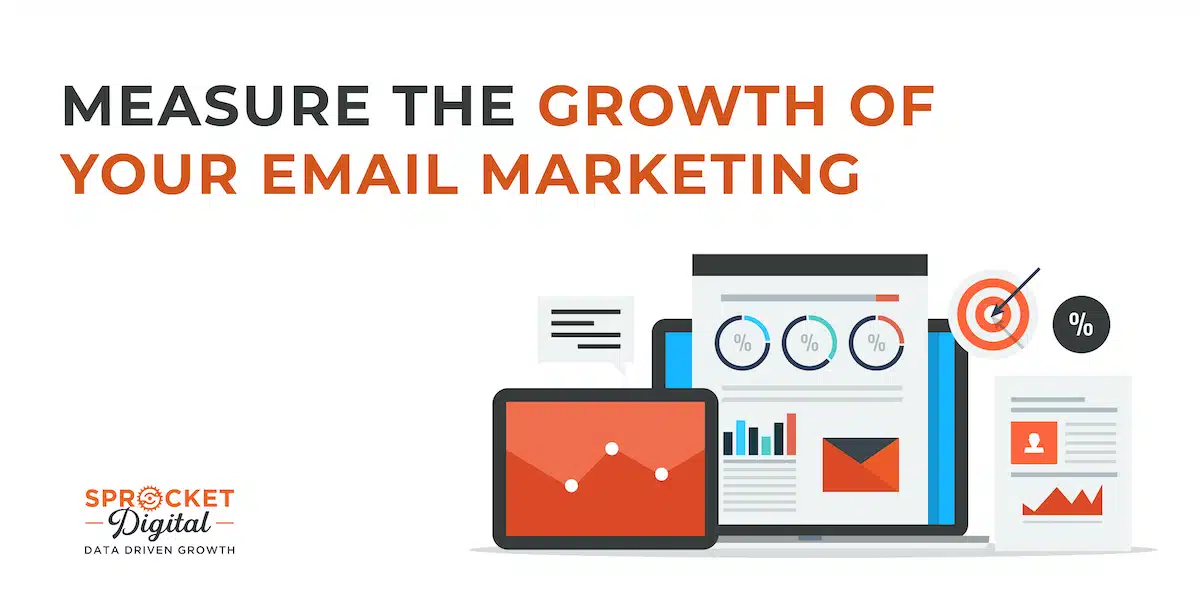
Email marketing is a brilliant way to nurture your relationship with customers, manage your client base, and drive hot leads for your business - but how do you measure the success of your e-mail marketing performance? While growing your subscriber number is important, it’s not the only thing you should be looking at. We are going to guide you through the metrics that matter most when attempting to grow your business through email marketing.
An open rate is defined by the percentage of subscribers who open an email campaign.
Your open rate can affect future deliverability, so it’s important to get this one right. An average to aim for is 15-20%, while anything over 30% is exceptional. This is largely influenced by your subject line and the relevance of the content for your audience, but can also fluctuate depending on the day/time of delivery, frequency of emails, sender name and how it appears in preview mode.
This is the number of subscribers who click a link in your email, pushing traffic to your website. CTR is counted from the total number of emails sent, while CTOR only counts opened emails. These two metrics tell you how relevant your content is, how compelling your call to action is and how user-friendly your copy and design is for your audience.
Your click rates can be improved by ensuring your email is optimised for all devices, is personalised and compelling, and has an interesting subject line and content. Ideally, your click rate should scale with your list size. If it starts to fall as your database grows, it can be a sign that your targeting is off as your new leads are not becoming customers.
The number of people who opt out of receiving more emails from you will determine your unsubscribe rate. Not all unsubscribes are bad – some can help your overall metrics if the person wasn’t engaged. It’s natural to see some level of opt-out happen with most campaigns. However, it’s worth paying attention if a higher than usual amount of unsubscribes occur in the same time period. This could indicate that your content, subject line, or frequency of emails needs to be reconsidered.
Bounce rate is the emails that couldn’t be delivered because of an incorrect email address, spam issues, or blocking. This tells you how many people didn’t receive your email, and can hurt your future deliverability. To avoid bouncing, use a double opt-in process, remove invalid email addresses as you find them, and don’t use purchased or old email lists.
Deliverability is the ability for your emails to reach your subscriber’s inboxes. It determines how easily your future emails will end up in your subscriber’s inbox versus their spam, so it’s vital to monitor this metric. It can be improved by using a double opt-in process, avoiding attachments or images that are too large that could be rejected by servers, making it easy for your users to unsubscribe and using an official email address from a registered domain.
The number of conversions on your website is attributed to email traffic. Finally, the big one: how successfully you convert subscribers to buyers from your email campaigns. This can also be read as how many sales and how much revenue your email campaigns generate. Ideally, as your list size grows, your open rate and click rates grow with it, and your conversion rate for email traffic follows suit. One metric cannot be read without the others – they’re all essential to monitor for a successful campaign.
If you believe you could be making more out of your email marketing, get in touch with us today and we will deliver end-to-end email marketing campaigns that bring the best of the platform to your business.

With well over one hundred 5-star Google reviews, its safe to say we are the real deal. Client relationships and demonstratable results are our priority. If you'd like to know more, we'll even let you talk to some real clients.